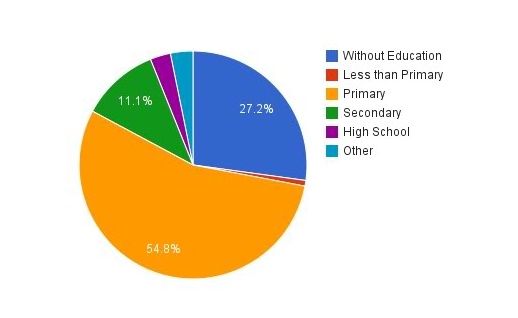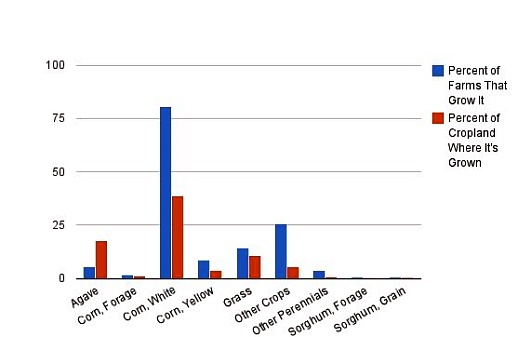Food activist Jill Richardson, author of Recipe for America: Why Our Food System is Broken and What We Can Do to Fix It, has a blog called Jill Over the Ground (formerly La Vida Locavore – Locavores being people interested in eating food that is locally produced, and has not traveled long distances.)
Richardson, who serves on the policy advisory board of the Organic Consumers Association, visited Mexico twice in 2010 and has published an interesting online diary of her trips. Richardson visited the two contrasting states of Jalisco and Chiapas. In the former wealthy state, she was able to spend some time in the agricultural community of Cuquio. Her purpose on this trip was “to learn about the impacts of the Green Revolution and NAFTA on corn production there.” Later in the year she visited Chiapas, a far less wealthy state, during the time of the coffee and corn harvests, “working with and learning about the Zapatistas (an indigenous insurgent group).”
Following her trips, Richardson compiled a page summarizing agricultural statistics for Chiapas, Jalisco and Cuquio, based on Mexico’s 2007 Agricultural Census. The page has numerous tables and graphs about everything from crops grown and machinery used to irrigation, access to insurance, living conditions and other sources of household income.
Richardson’s passion for produce that is organic and locally produced is admirable. The anecdotes in her diary entries are well told, and raise important issues about the overuse/abuse of pesticides and fertilizers,the exploitation of farmers, microlending and a host of other factors that caught her attention. While her diaries are certainly not a comprehensive analysis of agriculture in the areas she visited, they do shed some light on some of the important issues facing farmers there. The diary entries are worth reading for the many examples and photographs included.
- Mexico Diaries: Table of Contents
- Agricultural Statistics of Mexico
Her diary entries include:
- Mexico Fires Its Corn Farmers,
- Jalisco Ecological Collective
- Conversation with a Corn Expert
- Microlending in Cuquio, Pesticides
- A Full Day with the Zapatistas in the Highlands
- A Trilingual, Multicultural Corn Experiment
- This Corn Ain’t Roundup Ready
- The Market in Palenque
- The Stingless Bee Workshop
I should note that despite Richardson’s impassioned and persuasive writing, I’m not actually in agreement with her advocacy for locavorism. I find myself more in agreement with the reviewer of her book who wrote that, “The author’s rabid advocacy of locavorism is especially myopic; she brushes past the costliness and impracticality—When buying eggs I ask the farmer how many chickens they own and if these chickens are on pasture—and ignores critics who argue that locavorism is an energy-inefficient fad.” (See The energy efficiency of farming in Mexico and elsewhere.)
That said, Richardson’s online diary is a very useful resource and likely to be a valuable starting point for many classroom discussions.
Related posts
- How did the Aztecs get their food? Sustainable farming in Aztec times
- The energy efficiency of farming in Mexico and elsewhere
- How sustainable is organic agriculture on the Baja California Peninsula in Mexico?
- Case study of a Tarahumara garden
- Mexico’s first cooks and the origins of Mexican cuisine
- Mexico, the home of corn, is now the world’s largest corn importer
Geo-Mexico has many other agriculture-related posts (easily found via our tag system). They include posts about the geography of growing/producing cacao, honey, sugarcane, coffee, Christmas trees, chiles, floriculture, tomatoes, tequila, horticultural crops and oranges.


Sorry, the comment form is closed at this time.